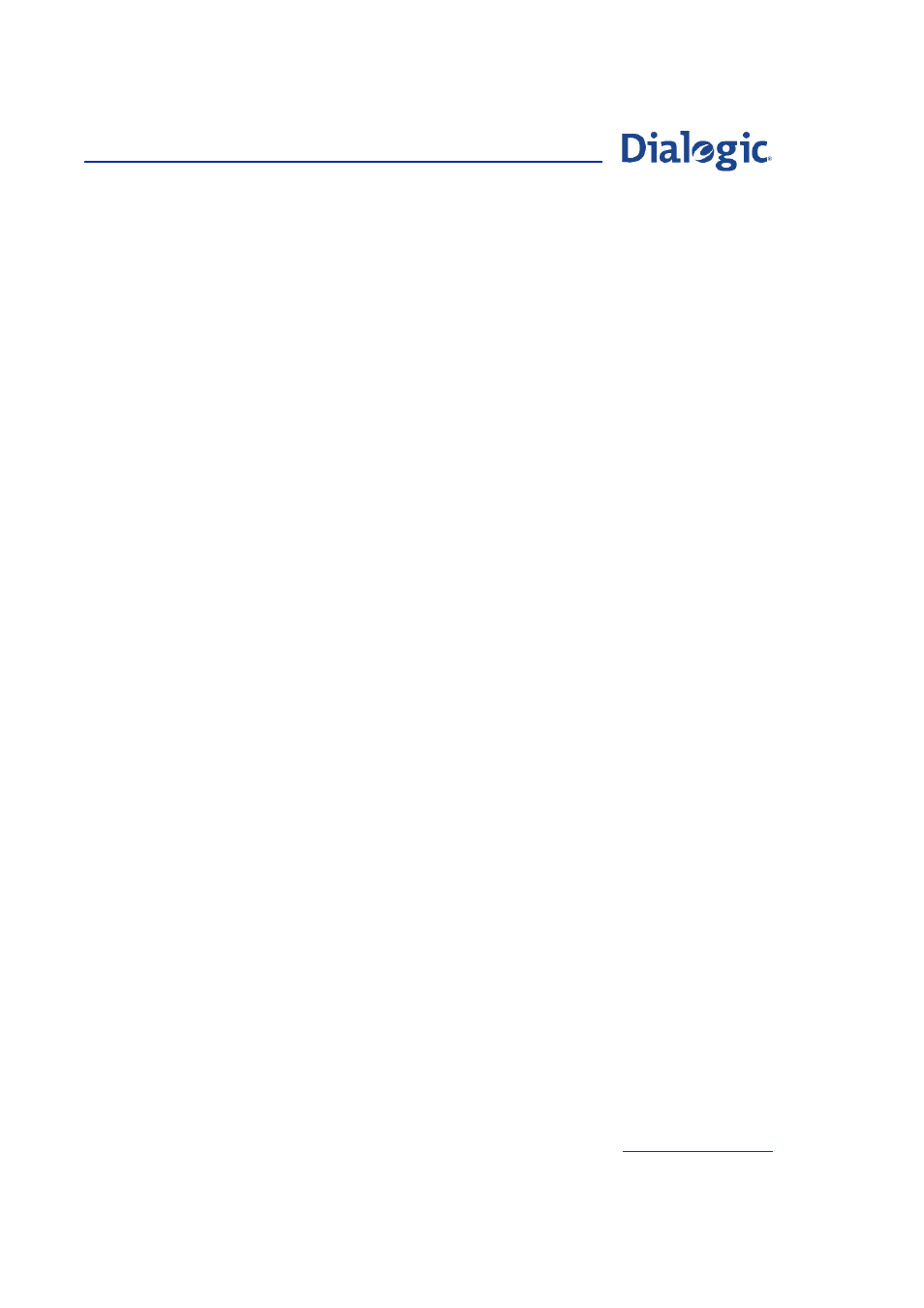Procedure, 2 call collision procedure, Call collision procedure – Welltech Dialogic SS7 Protocols ISUP User Manual
Page 91

Dialogic
®
SS7 Protocols ISUP Programmer's Manual Issue 15
91
Note: All new user applications should make use of the Application Controlled Release
mechanism.
Procedure
If the user receives a Release Indication (REL) message from ISUP:
• The user application must acknowledge it immediately with a Release
Response (RLC). The user must then wait until the ISUP module
responds with a Release Confirmation (RLC) before attempting a new call
on this circuit.
• ISUP will continue to send Release Indication until the user issues Release
Response. The user application may send a Release Request prior to the
Release Response. (This may be useful if it is not possible for the
application to complete release of the circuit immediately.) If a Setup
Indication is received from the network before the user issues a Release
Response the circuit will automatically be blocked. When the user does
issue the Release Response the circuit is automatically unblocked.
• If the Release Indication has been generated by ISUP (without ISUP
having received a Release Indication from the network) this normally
indicates that an error condition such as timer expiry has occurred. In
such cases, the ISUP module will continue to send Release Indications to
the user until such time the user sends a Release Response. ISUP
should then send a Release Confirmation to the user.
If the user application sends a Release Request (REL) to ISUP:
• The user application must wait for the ISUP module to acknowledge it
with a Release Confirmation primitive before attempting a new call on
that circuit.
If the user application attempts to set-up a new call before the ISUP module
has sent Release Confirmation, the Setup Request will be discarded and a
maintenance event will be indicated to the Maintenance module.
6.8.2
Call Collision Procedure
In order to ensure that the correct behavior is taken by the ISUP module
when a call collision (or glare) condition is detected, bits 0-1 in the
the required value (refer to
Section
8.2 Configure Circuit Group Request on
).
Setting the appropriate circuit group option will assign one end of the circuit
to be slave and the other to be master. For example, if bits 0 and 1 are set
to one i.e. “Outgoing call priority on all circuits” then this end of the circuit
will be master.
For the ISUP module, there are two types of call collision: external call
collision and internal call collision. These are described in the following sub-
sections.
